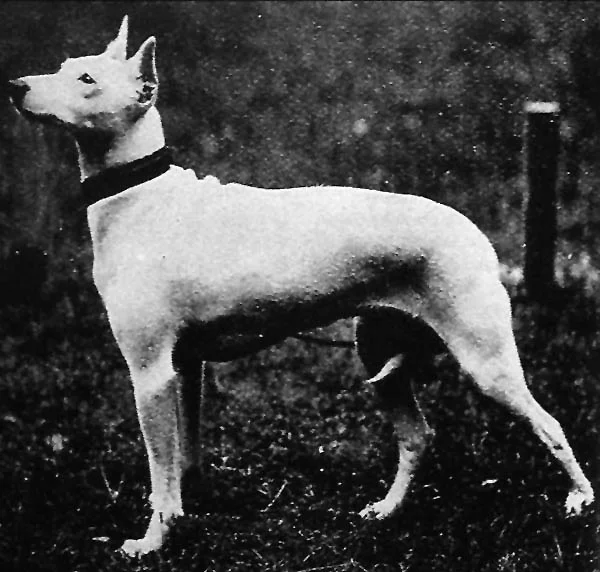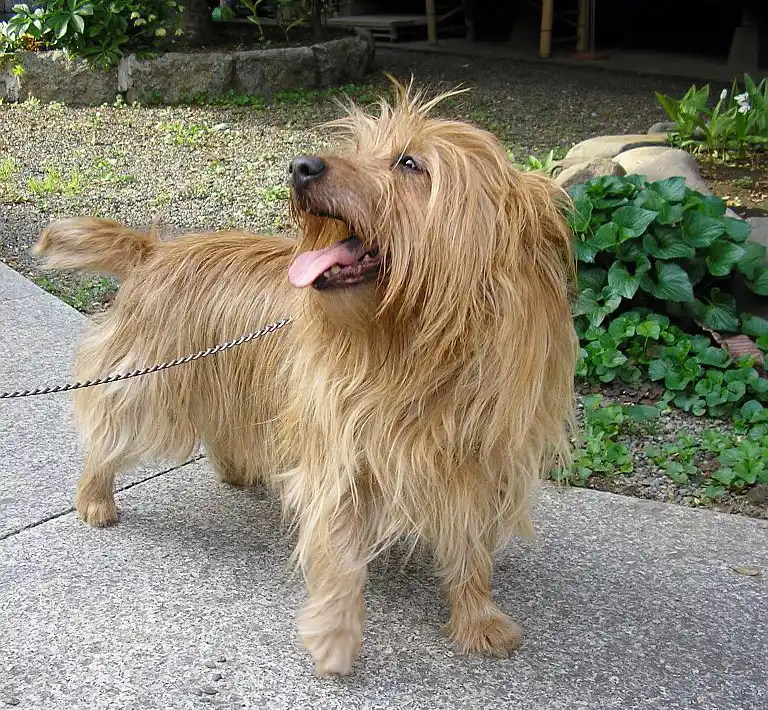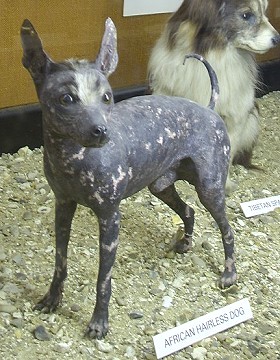Skye Terrier
The Skye Terrier is a small, loyal breed with a long, flowing coat and a unique appearance. Originally bred for hunting, they are affectionate companions that require regular exercise and grooming.
Overview
🐕Breed Overview
✨Key Traits
💡What Makes Skye Terrier Special
The Skye Terrier's most defining traits include its loyalty and protective instincts. They are fearless hunters, displaying surprising strength and stamina for their size.
Their long, flowing coat is not only a hallmark of their appearance but also serves as protection against the elements. Despite their stubbornness, they are affectionate companions who thrive on human interaction.
Their reserved nature can make them seem aloof, but with proper socialization, they can be friendly and engaging with those they trust. These traits make them well-suited for active owners who appreciate their unique personality.
The Skye Terrier is a unique and charming breed that boasts a long, flowing coat and a distinctive appearance. Originating from the Isle of Skye in Scotland, this breed has a rich history as a skilled hunter of small vermin, including foxes and badgers. With its loyal and affectionate nature, the Skye Terrier has transitioned from a working dog to a beloved companion in many households.
Their striking looks, characterized by a long body, short legs, and abundant hair that often obscures their eyes, make them stand out in any crowd. Despite their somewhat stubborn demeanor, Skye Terriers are known for their intelligence and can be trained effectively with positive reinforcement methods. They require regular exercise, ideally through daily walks and playtime, to keep them happy and healthy.
While they can be wary of strangers and other dogs, their loyalty to their families is unwavering. The Skye Terrier's grooming needs are moderate, requiring regular brushing to maintain their beautiful coat. Overall, they are a delightful breed for active owners who appreciate their unique personality and history.
🎉Fun Facts
Queen Victoria's affection for the breed helped popularize it in the 19th century.
Skye Terriers are often wary of strangers but are very affectionate with their families.
The breed has been featured in literature, notably in the story of Greyfriars Bobby.
The breed is known for its long, flowing coat that can obscure its eyes.
The Skye Terrier is one of the oldest terrier breeds, dating back to the 1500s.
Breed Characteristics
Family & Friends
Good Behavior
Get Up & Go
Household Harmony
Temperament & Personality
✨Key Traits
🐕Core Temperament
The Skye Terrier possesses a temperament that is both courageous and gentle. They are known for their loyalty and affection towards their families, often forming deep bonds with their owners.
While they are friendly and playful with those they know, they can be cautious and reserved around strangers. This breed is also known for its strong protective instincts, making them excellent watchdogs.
Their independent nature can lead to stubbornness, so consistent training and socialization are essential to help them thrive in various environments.
💫Personality Profile
Skye Terriers are known for their loyal and affectionate nature, forming strong bonds with their families. They are typically calm and reserved, especially around strangers, making them excellent watchdogs.
While they can be stubborn at times, they are also intelligent and capable of learning commands and tricks with consistent training. Their playful side emerges during interactive play sessions, but they may not be as exuberant as other terrier breeds.
Socialization from a young age is essential to help them become well-adjusted adults, as they can be cautious around unfamiliar people and dogs.
🔊Vocal Tendencies
Skye Terriers are generally not excessive barkers, but they will alert their owners to any unusual sounds or intruders. Their vocalizations can include barking when excited or when they feel the need to protect their territory.
While they may not bark excessively, they do have a strong instinct to communicate, especially when they perceive a threat or are seeking attention. Their noise level is moderate, making them suitable for both urban and rural living, provided they receive adequate socialization and training to manage their vocal tendencies.
Affection & Social Traits
Energy & Activity
Communication Style
Care Requirements
🏃♂️Exercise Requirements
Daily Exercise
The Skye Terrier requires moderate daily exercise to maintain its physical and mental health. Ideally, this breed should engage in at least 30 minutes of exercise each day, which can include a combination of walks, playtime, and interactive games.
Short to moderate walks are particularly beneficial, allowing the Skye to explore its environment while also providing necessary physical activity. Given their history as hunters, they enjoy activities that stimulate their natural instincts, such as chasing after toys or participating in agility exercises.
It's important to note that young Skye Terriers should avoid excessive exercise until they are at least 8 to 10 months old to prevent potential bone growth issues. Regular exercise not only helps manage their weight but also reduces the likelihood of behavioral problems stemming from boredom or pent-up energy.
Preferred Activities
🏠Living & Adaptability
Space Requirements
Skye Terriers are adaptable to various living environments, but they thrive best in homes with access to a secure outdoor space. While they can live in apartments, it is essential to provide them with regular opportunities for outdoor exercise and exploration.
A fenced yard is ideal, allowing them to roam safely while satisfying their curiosity. In smaller living spaces, owners should ensure that the Skye receives adequate daily exercise and mental stimulation to prevent boredom and potential destructive behaviors.
Their short legs and long bodies mean they do not require extensive space to move around, but they do need a safe area to explore and play.
Climate Preference
🍲Feeding Guide
Schedule
Food Types
Portion Size
Special Nutritional Needs
Skye Terriers may be prone to certain health issues, so a balanced diet rich in protein and healthy fats is essential. Owners should monitor for food sensitivities and adjust their diet accordingly. Regular vet check-ups can help identify any specific dietary needs.
✨Grooming Requirements
Grooming Overview
The Skye Terrier's coat requires regular grooming to prevent matting and maintain its beautiful appearance. Owners should brush their Skye at least twice a week, focusing on areas around the ears, eyes, and underbelly where tangles are more likely to occur.
Bathing should be done as needed, but excessive bathing can strip the coat of its natural oils. It's important to clean the area around the eyes and mouth regularly to prevent irritation.
Nail trimming should be done every few weeks to keep their feet healthy and comfortable.
Care Schedule
Brush twice a week; bathe as needed; trim nails every 2-4 weeks.
Health Profile
⚕️Health Care
Regular health care is crucial for the Skye Terrier's lifespan. Routine veterinary check-ups, vaccinations, and preventive treatments can help detect and address health issues early. Maintaining a healthy diet, providing regular exercise, and monitoring for any changes in behavior or health are essential practices for ensuring a long and healthy life for this breed.
Health Issues Overview
⏳Average Lifespan
Genetic Factors
Genetics play a significant role in the Skye Terrier's lifespan, with certain hereditary health issues being more prevalent in the breed. Responsible breeding practices that prioritize genetic diversity can help reduce the risk of inherited conditions. Potential owners should seek out reputable breeders who conduct health screenings and provide transparency about the lineage of their puppies.
Living Conditions
The Skye Terrier's lifespan can be influenced by various environmental factors, including housing conditions, climate, and social interactions. A stable and loving home environment, along with regular exercise and mental stimulation, can promote longevity.
Exposure to extreme temperatures should be minimized, as Skye Terriers are more comfortable in temperate climates. Additionally, social interactions with family members and other pets can enhance their emotional well-being, contributing to a longer, healthier life.
🏥Common Health Issues
Intervertebral Disk Disease
Warning Signs
🔬Diagnosis
Veterinarians typically diagnose this condition through physical examinations and imaging tests such as X-rays or MRIs.
💊Treatment
Treatment options may include medication for pain management, physical therapy, or surgery in severe cases.
📝Management Tips
Maintain a healthy weight, provide moderate exercise, and avoid high-impact activities, especially in young dogs.
Copper Toxicosis
Warning Signs
🔬Diagnosis
Diagnosis is made through blood tests and liver biopsies to assess copper levels.
💊Treatment
Treatment may involve medications to reduce copper levels and dietary changes.
📝Management Tips
Regular veterinary check-ups and a diet low in copper can help manage this condition.
🛡️Preventive Care
🔬General Health Check
A comprehensive health screening to assess overall health and identify any potential genetic issues.
📅 Annually, starting at one year of age.
🔬Copper Level Test
A test to evaluate liver function and assess copper levels in the blood.
📅 Every 1-2 years, especially for dogs with a family history of copper toxicosis.
🔬Spinal Health Assessment
An evaluation of spinal health to detect any early signs of intervertebral disk disease.
📅 Every 1-2 years, especially for older dogs or those showing signs of back pain.
Training
🧠Intelligence & Trainability
💪Work Drive
Skye Terriers have a moderate work drive, stemming from their history as hunting dogs. They thrive on tasks that challenge their intelligence and physical abilities.
Activities such as agility training, tracking, and earthdog trials can provide the mental stimulation they need. Without sufficient engagement, they may become bored and exhibit undesirable behaviors, such as digging or excessive barking.
⚠️Training Considerations
Skye Terriers can exhibit stubbornness, which may pose challenges during training. Their independent nature means they may not always be eager to follow commands, especially if they perceive them as unnecessary.
To overcome these challenges, consistent and positive reinforcement training methods are recommended. Early socialization is crucial to help them become comfortable around strangers and other dogs, as they can be wary and protective.
Engaging them in training sessions that incorporate play can also help maintain their interest and enthusiasm.
📝Training Tips
Training a Skye Terrier requires patience and consistency. Start with basic obedience commands and gradually introduce more complex tasks.
Use positive reinforcement techniques, such as treats and praise, to encourage good behavior. Socialization should begin early, exposing the puppy to various people, environments, and other animals to foster a well-rounded temperament.
Regular training sessions, ideally short and fun, will keep the Skye engaged and responsive. It's important to be firm yet gentle, as harsh corrections can lead to fear or resistance.
History & Heritage
📜Origin Story
The Skye Terrier's origin is steeped in legend, with tales suggesting that the breed descended from long-haired dogs that survived the wreck of the Spanish Armada in the late 1500s. These dogs interbred with local terriers, resulting in the unique characteristics of the Skye Terrier we see today.
The breed was developed on the Isle of Skye, where it was valued for its ability to hunt vermin and protect farms. Over the centuries, the Skye Terrier has maintained its distinct appearance and temperament, remaining a beloved companion despite its declining numbers in recent years.
⏳Development History
The Skye Terrier is one of the oldest terrier breeds, with origins tracing back to the 1500s on the Isle of Skye in Scotland. Initially bred to hunt small game like foxes and badgers, the breed's long coat provided protection from harsh weather and rough terrain.
The Skye Terrier's popularity peaked in the 19th century, particularly after Queen Victoria adopted the breed, leading to a surge in its presence in both aristocratic and common households. Despite its historical significance, the breed has faced a decline in popularity and is now considered one of the most endangered native dog breeds in the UK.
🛡️Purpose & Historical Role
Historically, the Skye Terrier was bred for hunting small mammals, including foxes, badgers, and otters. Its long body and short legs allowed it to navigate rocky terrains and burrows effectively. In modern times, while the breed still retains its hunting instincts, it has become a cherished companion animal, known for its loyalty and affectionate nature.
🏺Cultural Significance
The Skye Terrier has a rich cultural history, particularly in Scotland, where it was bred for hunting vermin. Its popularity surged in the mid-1800s when Queen Victoria became enamored with the breed, leading to its widespread recognition among the nobility and commoners alike.
The breed's loyalty and unique appearance have made it a symbol of devotion, exemplified by the famous story of Greyfriars Bobby, a Skye Terrier who famously guarded his owner's grave for 14 years. This tale has contributed to the breed's reputation as a loyal companion and has been celebrated in literature and film, further embedding the Skye Terrier in popular culture.
Conservation Status
This breed is endangered with low population numbers globally.









